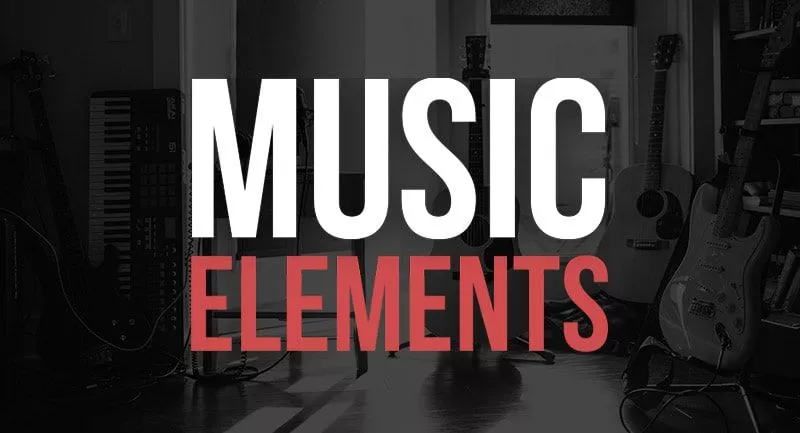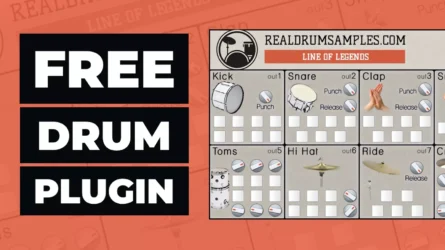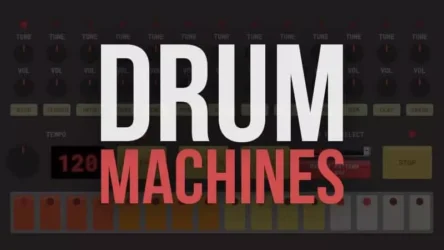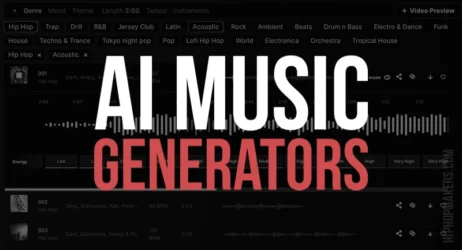This guide will answer what are the elements of music, their meanings, the purpose of each element, and why they are essential to music.
What Are the Elements of Music?
The elements of music are the basis of music, such as melody, harmony, texture, timbre, tempo, meter, and more. Combining these elements helps musicians create unique and appealing sounds to a broad audience and is used in many genres.
- The Elements of Music ( 13 Elements )
- Why The Elements of Music Is Important
- The Purpose of Musical Elements
- Elements That Make A Song Unique
What Are the Elements of Music? ( 13 Elements )
Music is the art and science of creating pleasant sounds. It has been in humans since the first note was produced.
In the ancient world, music was intimately connected with the religious sphere. It was played and developed to recognize true, good, and beautiful nature.
The creative activity of man using sounds is called music, as it includes the study of the performance, the theory, and the criticism. It is considered one of the humanities, and its analysis is connected with the basic school.
Following are the elements of music that are commonly used in various genres:

1. Dynamics
Dynamics are the different volumes of sounds throughout a song. They can also include the expression of softness or loudness with instruments or vocals.
Music genres, such as musical theater, opera, and film scores, are known for their use of dynamics.
Related: What Are Dynamics In Music
2. Form
The form of a song is the structure that helps listeners know how long a song will be and what to expect. It has different sections, including the introduction, exposition, development, recapitulation, and coda.
Each section has a different tempo, key signature, chord progression, melody, and more. It is mostly used in classical music genres to help them seem more organized and pleasing to the ear.
Related: What Is Form In Music
3. Harmony
Harmony is the combination of two or more sounds played simultaneously. This includes chords, melody, and counterpoint.
It is a theory or system of tones, which is the vertical arrangement of the pitches. Harmony is created using scales, modes, and tonal space.
It is diversely used in various genres, such as rock and roll, classical music, and folk music, to create unique sounds and experiences for the listener.
Related: What Is Harmony
4. Melody
Melody is a succession of single notes. It is a pattern of pitches that are heard as if they are being played in succession, one after the other, creating music.
This involves the use of patterns, such as scales and arpeggios. The melody is usually what listeners remember from a song after hearing it.
Music genres, such as folk music, country, pop, and jazz, commonly use melody to create recognizable songs.
Related: What Is A Melody
5. Rhythm
Rhythm is a combination of sounds and silence that make a song musical, which has a pattern and regularity. It is what makes the music have energy and movement.
Every genre has its own understanding of rhythm, including common time, compound duple meter, or simple duple meter.
Rhythm is used in many different genres, such as jazz, rock and roll, folk, country, blues, classical music, indie music, and more.
Related: What Is Rhythm
6. Texture
The texture is the type of sound that makes up a song, which can be smooth, harsh, gritty, metallic, or quiet. Musical theatre uses texture as singers have different parts, and each part is meant to stand out from the others.
The texture is mainly used in the classical music genre to define the tension, volume, and mood of a piece.
Related: What Is Texture
7. Timbre
Timbre is the quality of a particular musical sound, which can be deep and full or soft and light. It is also called tone color and is created by the strength of a sound and its overtone content. Timbre is mostly used in the classical music genre because it helps distinguish the sound of an instrument.
Related: What Is Timbre
8. Tonality
Tonality is the music’s arrangement of pitches built around a central pitch, such as C major. It involves the use of intervals, such as major and minor thirds.
It is used in genres like jazz and blues to give a song a catchy tune and rhythm. These genres are mostly about improvisation, although they have a structure with rhythm, melody, and texture.
9. Tempo
Tempo is the speed at which a song is played. It can be fast or slow and can vary throughout a song. This element of music is used to create tension and build-up in a song.
Tempo can also be altered for dramatic effects, such as having a faster or slower tempo than the original. It is primarily used in orchestral music to build drama and intensity.
Related: What Is A Tempo
10. Meter
The meter is the organization of rhythm, which divides music into regular measures with accented beats. It helps listeners predict where and when a beat will next occur.
Meter can be simple or compound and is mainly used in genres such as rock, pop, and jazz to create steady rhythms that are easy to dance to.
Related: What Is A Meter
11. Pitch
Pitch is the perceived frequency of a sound, which can be low or high. Music uses pitches to create harmony and melody.
Pitches are divided into half steps and whole steps. Semitones are the smallest interval in Western music, while whole tones measure two semitones.
Pitches are used in genres such as rock, pop, and country to create a catchy song with the right tone.
Related: What Is Pitch
12. Duration
Duration is the length of a note, which can be written as a shape on paper. This includes whole notes, half notes, quarter notes, and eighth notes.
Duration is also used to create a song with a steady beat and rhythm, such as songs in 4/4 time. It is mostly used in genres like country and classical music to create a steady beat.
13. Structure
The structure is the organization of musical events or phrases, which are made up of sections.
Musical theatre has a strophic form where a song is divided into two or more phrases. In contrast, opera has a through-composed form, which does not repeat sections.
The structure is mostly used in musical theatre and opera to help guide a song and create an interesting plot.
Related: Understanding Song Structure & Arrangements
Why Are The Elements of Music Important?
The elements of music play an essential role in creating great sounds. They are the basis of every musical piece. When used correctly, they can create music pleasing to the ears and easily remembered.
If your music doesn’t include the right elements, it won’t be memorable in a very saturated market. For example, if you have great melodies with bad rhythms, your audience will find themselves humming the wrong notes when they leave your store.
In addition to strengthening your musical presence, these elements improve visibility and public recognition. You will be easily remembered if your music is appealing to the ears.
What Is The Purpose of Musical Elements?
The elements of music are the foundation of all musical pieces. They must be taken into consideration when composing or performing music.
These elements not only make it possible to create music that is unique and different, but they also help the audience correctly identify the style of your music.
The purpose of musical elements is to make the audience enjoy listening to music. These elements must be consistent so that listeners can identify your music.
Because of this, these elements must always be used properly, or you can lose your audience. It’s impossible to see a band that plays in a way that doesn’t consider the elements of music.
All musical genres use these elements. However, they are used differently in every genre. Jazz and blues use very strong and unique rhythms and beats. Classical and electronic music use different dynamics to emphasize their sounds, while rock musicians use different timbres to create perfect combinations.
What Are The Elements Of Music That Make Each Song Unique?
The elements of music are combined in different ways to make each song unique. Music is all about communication and emotion, which means that it’s not always the same structure for every song.
Different songs will use specific elements in different ways to simulate different feelings and emotions, which is the universal language of music.
One example is how a song can be sad or happy depending on the dynamics used, tempo, and melodies displayed.
However, the structure is always the same for similar genres, but they are used differently to create unique sounds.
Different genres use different elements in their music. One example is how rappers use lyrics, beats, and rhythms to make their songs unique.
They combine all three of these elements so that the lyrics can be heard clearly throughout the melody.
Jazz and blues use a unique structure that allows the instruments to be heard clearly. Classical pieces focus more on melodies and harmonies, making their songs very melodic.
Rock is well-known for its lyrics and melodies. These two elements create an unforgettable sound that many people like to listen to.
Summary of Elements of Music
Melody, harmony, texture, timbre, tempo, meter, and other elements of music are the foundation of music. By combining these elements, musicians can produce unique and appealing sounds that can be used in a variety of genres and appeal to a wide audience.
In wrapping up our discussion on the elements of music, it’s important to remember that these are more than just music terms or basic concepts. They are the building blocks that form the foundation of music theory. Take pop music, for example. A pop song doesn’t simply happen, it’s a musical composition that uses musical elements, like melody, rhythm, and harmony, which are the core elements, to create a unique sound.
Let’s think about a bass guitar playing in a pop song. It produces a certain tone color, a unique timbre that differentiates it from other instruments. Along with the human voice and other instruments playing, they create texture in the song. This texture can be influenced by strong and weak beats, regular or irregular pulses, and even the time signature.
The use of the same instrument playing the exact same melody or the same rhythm can produce the same sound. But when different instruments play two or more notes, an interesting rhythm is formed. This is the essence of teaching music and music education, as it helps us understand rhythm and the other important elements that make music what it is.
Modern popular music is a testament to the diversity of musical elements. Even when two notes are played at a walking speed or medium speed, they create a distinct sound. Whether it’s a quarter note, an eighth note, or a melody in triple meter, each plays a role in the song’s overall feel. In many cultures, music means more than sound; it’s an expression of emotions, stories, and traditions.
From the first half of a sonata form to the second half of a simple meter, every part of a song contributes to its whole.
The sound created by a single voice or several instruments reflects the musical elements at play. Even if the basic elements remain the same, different styles and more advanced concepts can greatly alter a song’s tone.
So, as we have seen, whether it’s in pop songs or other forms of modern music, the elements of music are varied and nuanced. They involve everything from the main melody and rhythm to the unique sound of different instruments.
Understanding these elements not only helps us to appreciate music on a deeper level but also guides us when we write music ourselves.
Remember that each element, whether it’s a melody, rhythm, or harmony, has its own unique role in the music we enjoy.
This understanding helps us appreciate the complexity and beauty of music, whether it’s four beats in a bar or the irregular pulses caused by a unique combination of instruments. And in the end, this understanding only enhances our love for the sound of music.
I hope you now understand the different elements of music and how to use them when creating music.




